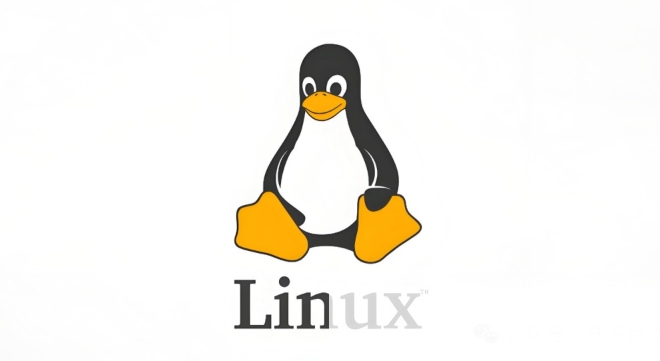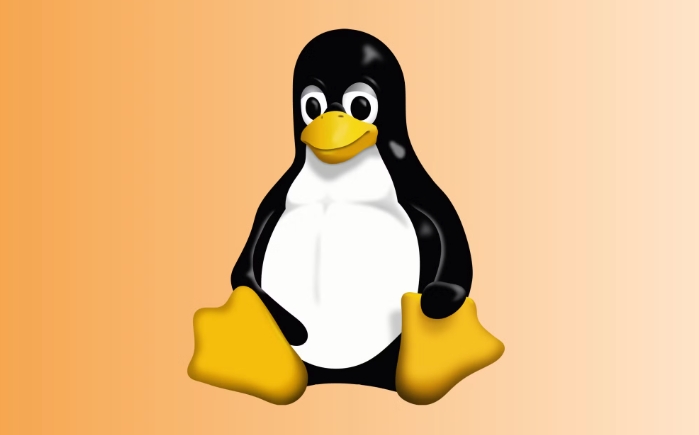Installing Linux system is friendly to novices. The key steps include: 1. Select a suitable distribution such as Ubuntu or Linux Mint; 2. Use Rufus or Ventoy to create a bootable USB drive; 3. Enter the BIOS settings to boot from the USB drive and complete the system installation; 4. Update the system, install the software, and adjust the display and input method settings after installation. The entire process takes about 15 to 30 minutes. When encountering problems, you can find online solutions. The actual operation is not complicated.

Installing a Linux system is actually not as complicated as you think. As long as the steps are right, novices can complete it smoothly. The key is to select the right distribution, prepare the installation media, and understand the basic partitioning and setup process.

Choose the Linux distribution that suits you
There are many "versions" of Linux, which are the so-called "distributions". Common ones include Ubuntu, Debian, Fedora, Arch Linux, etc. If you are using it for the first time, it is recommended to start with Ubuntu or Linux Mint . They are active in the community, rich in documentation, and have a graphical interface that is suitable for daily use.

- Ubuntu : Suitable for most users, stable updates, and suitable for beginners.
- Linux Mint : Based on Ubuntu, it comes with more drivers and software support, and the interface is closer to Windows.
- Fedora : Suitable for developers or people who like cutting-edge technology.
- Arch Linux : Suitable for advanced users, with high freedom but a complicated installation process.
After selecting, go to the official website to download the corresponding ISO image file.
Create a bootable USB installation disk
After downloading the ISO file, you need to write it to the USB drive and make it into a boot disk that can be used to install the system. Here are a few common tools:

- Rufus (Windows) : Simple operation, almost one click to complete.
- Ventoy (cross-platform) : You can place multiple system images on the same USB drive.
- Startup Disk Creator (included in Ubuntu) : Suitable for those who already use Linux.
Prepare an 8GB or larger USB drive, plug in the computer, run the tool, select the ISO file you downloaded, and start writing.
Basic steps to install Linux
After plugging in the USB flash drive, restart the computer, enter the BIOS settings to boot from the USB flash drive (usually press F2, F12, or Del keys), and then enter the installation interface.
Several key points to pay attention to during the installation process:
- Language and region settings : Select Chinese and the time zone, which makes it more convenient to use later.
- Network connection : It is recommended to connect to the Internet before installation, and the system will automatically download some updates and drivers.
- Disk partition :
- If you are installing Linux separately, you can select "Erase Disk and Install".
- If you want to coexist with Windows (for example, coexist with Windows), select Coexist with Windows or Manual Partition.
- Manual partitioning is recommended to keep at least three partitions:
/(root),/home(user data) andswap(virtual memory).
- Create a user account : Remember to set a strong password.
The entire process takes about 15 to 30 minutes, depending on the hardware speed.
Basic settings after installation
After the system is installed, there are some small details that can optimize the user experience:
- Update the system: Open the terminal and enter
sudo apt update && sudo apt upgrade(suitable for Ubuntu-like systems). - Install commonly used software: browser, office suite, decoder, etc.
- Adjust display settings: such as adjusting resolution and turning on night mode.
- Install Chinese input method: such as Fcitx or Ibus, combined with Sogou or Google Pinyin.
These operations can make the new system adapt to your usage habits faster.
Basically that's it. Although it seems a bit too much, it is not difficult to take it step by step. Many people will encounter some minor problems when installing the system for the first time, such as boot failure or partition error. There are many solutions to these problems online. Don't be afraid of trouble, Linux is for playing.
The above is the detailed content of How to install linux. For more information, please follow other related articles on the PHP Chinese website!

Hot AI Tools

Undress AI Tool
Undress images for free

Undresser.AI Undress
AI-powered app for creating realistic nude photos

AI Clothes Remover
Online AI tool for removing clothes from photos.

Clothoff.io
AI clothes remover

Video Face Swap
Swap faces in any video effortlessly with our completely free AI face swap tool!

Hot Article

Hot Tools

Notepad++7.3.1
Easy-to-use and free code editor

SublimeText3 Chinese version
Chinese version, very easy to use

Zend Studio 13.0.1
Powerful PHP integrated development environment

Dreamweaver CS6
Visual web development tools

SublimeText3 Mac version
God-level code editing software (SublimeText3)

Hot Topics
 How to create a new, empty file from the command line?
Jun 14, 2025 am 12:18 AM
How to create a new, empty file from the command line?
Jun 14, 2025 am 12:18 AM
There are three ways to create empty files in the command line: First, the simplest and safest use of the touch command, which is suitable for debugging scripts or placeholder files; Second, it is quickly created through > redirection but will clear existing content, which is suitable for initializing log files; Third, use echo"> file name to create a file with an empty string, or use echo-n""> file name to avoid line breaks. These three methods have their own applicable scenarios, and choosing the right method can help you complete the task more efficiently.
 5 Best Open Source Mathematical Equation Editors for Linux
Jun 18, 2025 am 09:28 AM
5 Best Open Source Mathematical Equation Editors for Linux
Jun 18, 2025 am 09:28 AM
Are you looking for good software to write mathematical equations? If so, this article provides the top 5 equation editors that you can easily install on your favorite Linux distribution.In addition to being compatible with different types of mathema
 How to Install Eclipse IDE in Debian, Ubuntu, and Linux Mint
Jun 14, 2025 am 10:40 AM
How to Install Eclipse IDE in Debian, Ubuntu, and Linux Mint
Jun 14, 2025 am 10:40 AM
Eclipse is a free integrated development environment (IDE) that programmers around the world use to write software, primarily in Java, but also in other major programming languages using Eclipse plugins.The latest release of Eclipse IDE 2023?06 does
 SCP Linux Command – Securely Transfer Files in Linux
Jun 20, 2025 am 09:16 AM
SCP Linux Command – Securely Transfer Files in Linux
Jun 20, 2025 am 09:16 AM
Linux administrators should be familiar with the command-line environment. Since GUI (Graphical User Interface) mode in Linux servers is not commonly installed.SSH may be the most popular protocol to enable Linux administrators to manage the servers
 24 Hilarious Linux Commands That Will Make You Laugh
Jun 14, 2025 am 10:13 AM
24 Hilarious Linux Commands That Will Make You Laugh
Jun 14, 2025 am 10:13 AM
Linux has a rich collection of commands, and while many of them are powerful and useful for various tasks, there are also some funny and whimsical commands that you can try out for amusement. 1. sl Command (Steam Locomotive) You might be aware of the
 What is a PPA and how do I add one to Ubuntu?
Jun 18, 2025 am 12:21 AM
What is a PPA and how do I add one to Ubuntu?
Jun 18, 2025 am 12:21 AM
PPA is an important tool for Ubuntu users to expand their software sources. 1. When searching for PPA, you should visit Launchpad.net, confirm the official PPA in the project official website or document, and read the description and user comments to ensure its security and maintenance status; 2. Add PPA to use the terminal command sudoadd-apt-repositoryppa:/, and then run sudoaptupdate to update the package list; 3. Manage PPAs to view the added list through the grep command, use the --remove parameter to remove or manually delete the .list file to avoid problems caused by incompatibility or stopping updates; 4. Use PPA to weigh the necessity and prioritize the situations that the official does not provide or require a new version of the software.
 Install LXC (Linux Containers) in RHEL, Rocky & AlmaLinux
Jul 05, 2025 am 09:25 AM
Install LXC (Linux Containers) in RHEL, Rocky & AlmaLinux
Jul 05, 2025 am 09:25 AM
LXD is described as the next-generation container and virtual machine manager that offers an immersive for Linux systems running inside containers or as virtual machines. It provides images for an inordinate number of Linux distributions with support
 Gogo - Create Shortcuts to Directory Paths in Linux
Jun 19, 2025 am 10:41 AM
Gogo - Create Shortcuts to Directory Paths in Linux
Jun 19, 2025 am 10:41 AM
Gogo is a remarkable tool to bookmark directories inside your Linux shell. It helps you create shortcuts for long and complex paths in Linux. This way, you no longer need to type or memorize lengthy paths on Linux.For example, if there's a directory






